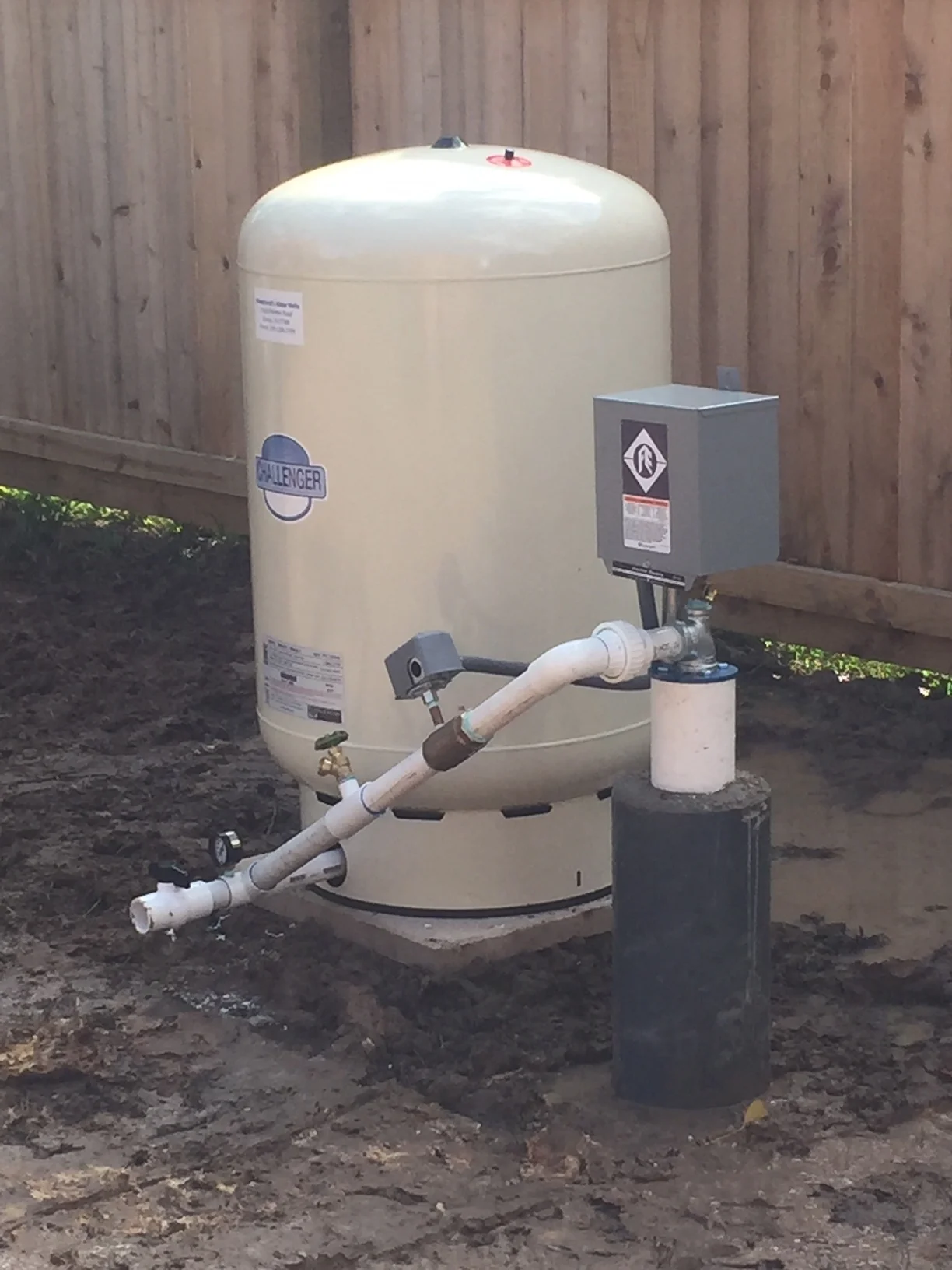Hildebrandt's Water Wells
A Well Owner's Guide
1. In the event that your water well stops working -Turn off the breaker to your well (this will help avoid any chance for further heat damage, pump damage, other system failures that could occur when your system stops working).
2. Effects of cold weather
ith the cold weather coming, do not forget to insulate your water well systems and piping.
The piping between your well and your tank is especially important. There is a small tube underneath your pressure switch that must be insulated and should not be left exposed to the elements. (See pictures below.)
Use a waterproof tarp or cover over the entire system after insulating it. Introducing a heat source in the area is also a good idea, but be careful of any fire hazard that may be created with your heat source. After you have insulated your system, make sure you know where the breaker is to be able to turn off the system, if needed. See items below explaining why you need to know how to turn it off.
Now that everything is insulated, turn on some of your outside faucets with a stream coming out of them that is the size of a matchstick. Monitor these faucets to make sure they are still running and keeping water moving through the pipes. It is a good idea to monitor your system on regular basis throughout freezing temperatures and through the night, if possible.
“I have no water! What do I do?” - In the event that your system does freeze, BE SURE TO TURN THE POWER/BREAKER OFF TO THE WELL FIRST BEFORE ATTEMPTING TO THAW OUT THE SYSTEM, PIPES, ETC. If you choose to not turn off the breaker to your system, you are at risk of losing the entire well due to heat damage down in the well from the motor not being able to pump and properly cool itself. Drilling a new well could take weeks and cost you $13,000-$16,000.
Thawing out your system - While the power is still off to the system, remove the tarp and all of your insulation on the piping between the well and the tank. Introduce a heat source to all of the piping and especially the sending tube under the pressure switch. When you believe that you have completely thawed out your system, turn your breaker back on. If the system does not work, TURN THE POWER/BREAKER BACK OFF and REPEAT. If you cannot successfully get your system working or think that there are more issues with the system than frozen pipes, do not hesitate to give us a call, but make sure that the power to the system remains off until we can come and assess the system.
All of these things may not protect you completely from freeze damage but if the breaker is turned off in time and you take all of the necessary precautions that you can. The likelihood of losing your system or having very expensive repairs may be minimized to just broken pipes.
3. Short cycling.
- If the pressure switch and pump in your well begins to turn on and off quickly at short intervals, your system is short cycling and needs to be repaired, turn off the breaker to the well and give us a call to discuss the necessary steps to repair the system.
4. DO NOT turn off any valves located between the well and tank.
- *Note this does not apply to any valved that is installed on the outlet line of the tank going to the house, but only on the inlet line between the well and the tank*
- If a valve was installed between the well head and the pressure tank, do not close this valve. In the event that this valve is closed, your pump will become "dead headed"(this means that the pump will attempt to continue pumping water but the flow of water is blocked to the tank and pressure switch) and your pump can overheat in your well casing which could cause permanent damage or ruin your well.
5. Caution: high voltage (230 volts)
- Water wells typically run off of 230 volts, avoid any contact with bare wires, etc. while the power to the well is on.
6. Do not loosen any bolts on top of your well seal.
- Do not loosen any bolts on top of the well seal on your casing. This could cause the lower flange of your well seal to fall down into the well and make it difficult to pull the pump out of the well if needed at a later date.
